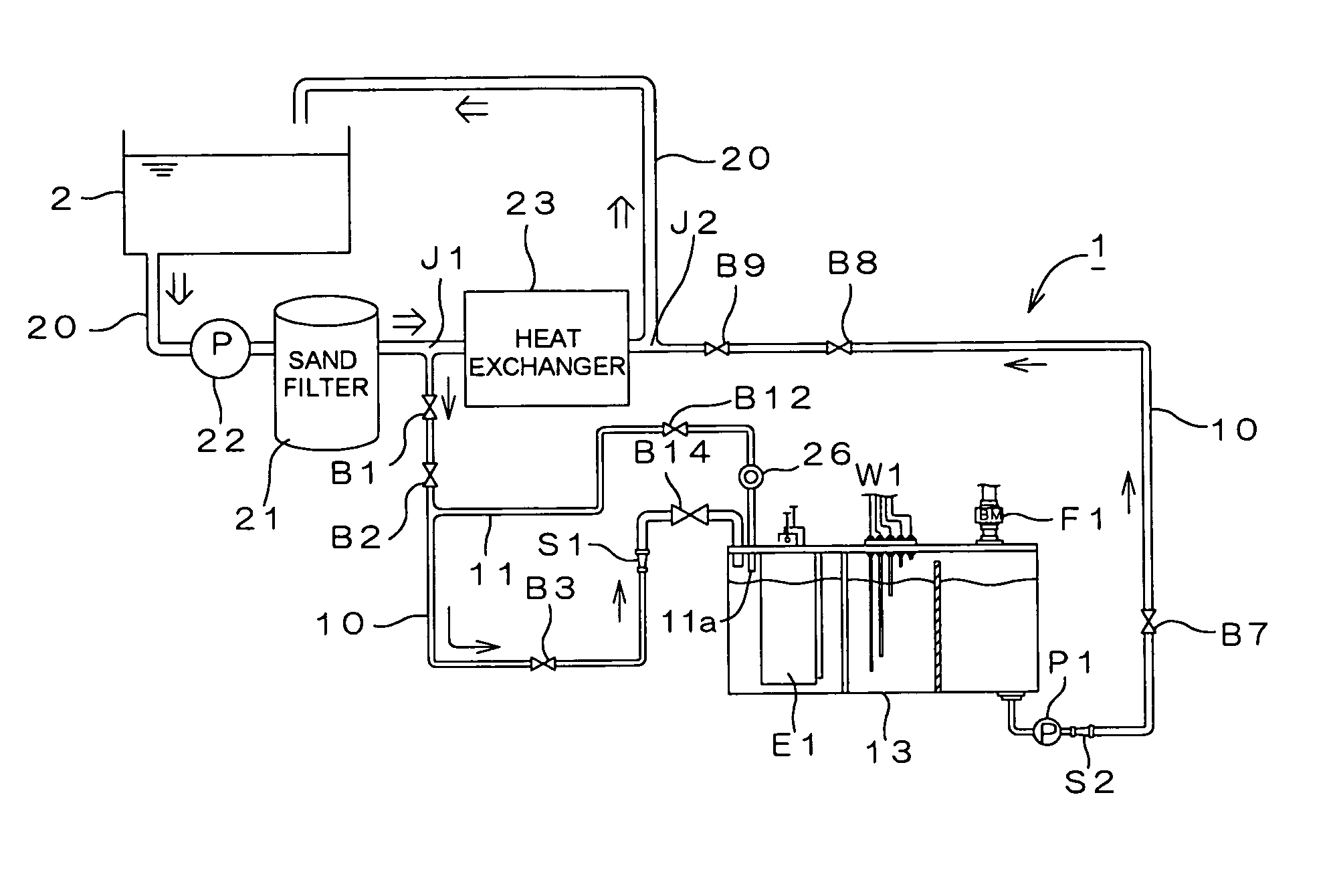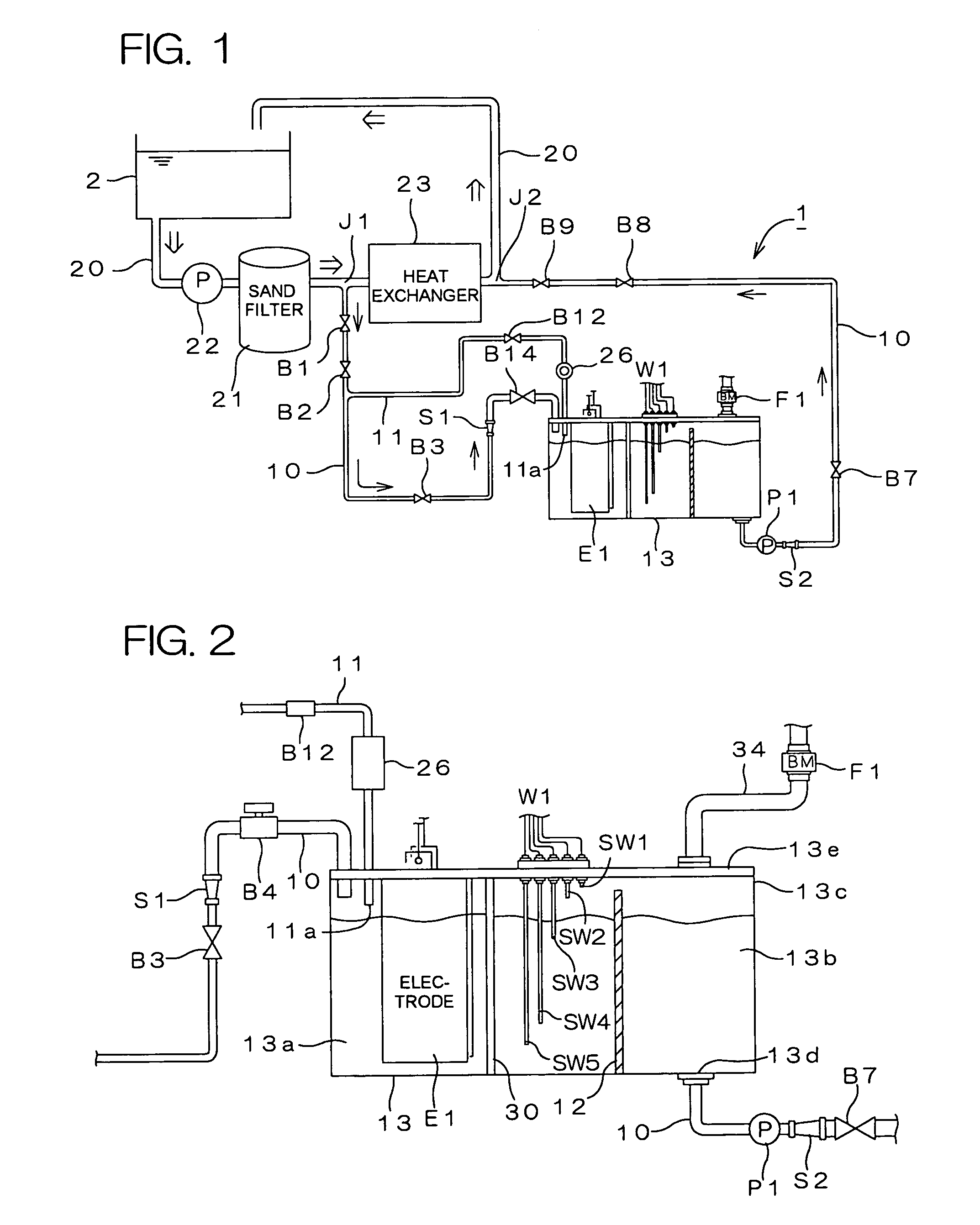Water treating device
a water treatment device and water treatment technology, applied in the direction of electrostatic separation, feed/discharge of settling tanks, refining by electric/magnetic means, etc., can solve the problems of insufficient swimming or bathing pools, large operation effort, and inability to meet the needs of water treatment, etc., to achieve water saving, less volume, and more precise water level control
- Summary
- Abstract
- Description
- Claims
- Application Information
AI Technical Summary
Benefits of technology
Problems solved by technology
Method used
Image
Examples
first embodiment
[0050]FIG. 1 is a diagram schematically illustrating the construction of a water treating device 1 incorporated in a large-scale water container 2 such as a swimming pool or a bathing pool in a bathhouse in accordance with the present invention.
[0051]Referring to FIG. 1, the water container 2 is provided with a main circulation line 20. The main circulation line 20 is provided with a circulation pump 22. Water is pumped out of the water container 2, circulated in a direction indicated by double-line arrows in the main circulation line 20, and fed back into the water container 2 by the circulation pump 22. A filter 21 for sand filtration of organic substances and a heat exchanger 23 for heating and cooling the circulated water are disposed downstream of the circulation pump 22 in the main circulation path 20.
[0052]A water treatment line 10 is diverged from the main circulation line 20 at a branch J1 located downstream of the filter 21 and upstream of the heat exchanger 23. The water ...
third embodiment
[0110]FIG. 10 is a diagram schematically illustrating the construction of a water treating device incorporated in a large-scale water container 2 in accordance with the present invention.
[0111]The construction of the water treating device shown in FIG. 10 is characterized in that a feed line 35 having a batch process electrolyzing chamber 14 as described in the second embodiment is connected parallel to a water treatment line 10 having an air / liquid separation chamber 13 as described in the first embodiment.
[0112]The water treating device shown in FIG. 10 is constructed such that a bypass line 41 is diverged from a main circulation line 20 and a residual chlorine sensor 20 is disposed in the bypass line as in the second embodiment. Therefore, the bypass line 11 and the residual chlorine sensor 26 provided in the water treatment line 10 in the first embodiment are not provided.
[0113]Alternatively, the construction of the first embodiment in which the bypass line 11 is provided in the...
PUM
| Property | Measurement | Unit |
|---|---|---|
| residual chlorine concentration | aaaaa | aaaaa |
| concentration | aaaaa | aaaaa |
| flow rate | aaaaa | aaaaa |
Abstract
Description
Claims
Application Information
 Login to View More
Login to View More - R&D
- Intellectual Property
- Life Sciences
- Materials
- Tech Scout
- Unparalleled Data Quality
- Higher Quality Content
- 60% Fewer Hallucinations
Browse by: Latest US Patents, China's latest patents, Technical Efficacy Thesaurus, Application Domain, Technology Topic, Popular Technical Reports.
© 2025 PatSnap. All rights reserved.Legal|Privacy policy|Modern Slavery Act Transparency Statement|Sitemap|About US| Contact US: help@patsnap.com



